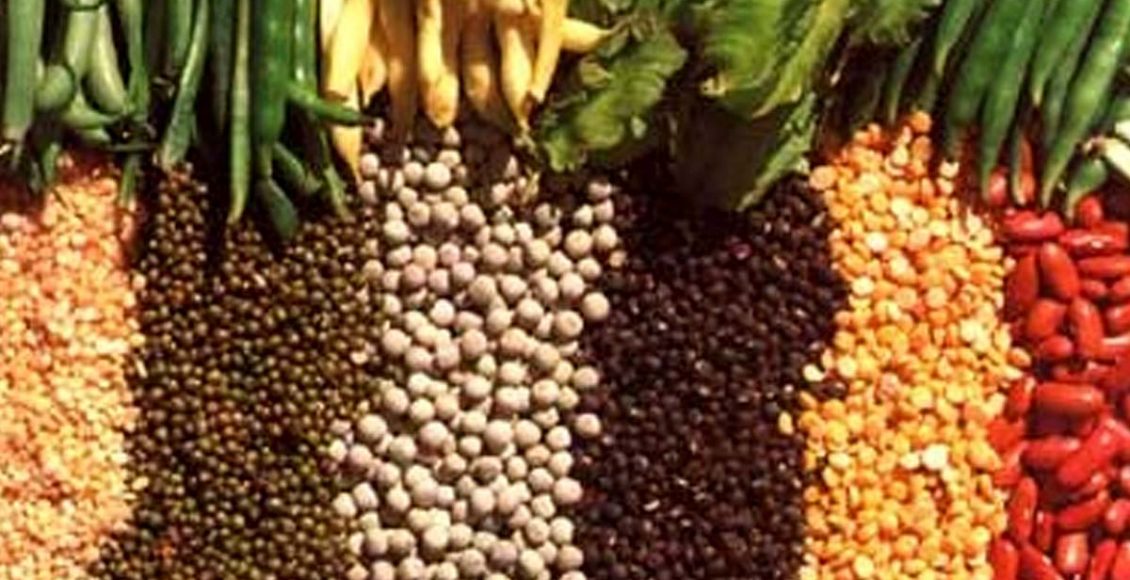
Adoption of biofortified crops through PPP model
India ranks 94th out of 107 countries in the latest GHI index and over 80 per cent adolescents in India suffer from micronutrient malnutrition also known as hidden hunger caused by lack of critical micronutrients such as vitamin A, zinc, folate, vitamin B12. Though micronutrient deficiencies can be alleviated through nutritional supplements, it could be an expensive solution. Biofortification is proven to be a sustainable and cost-effective approach to address malnutrition. Biofortified cultivars holds great promise for providing micronutrients to people who has limited access to diverse diets and other micronutrient interventions. This can be achieved through agronomic interventions, genetic engineering and conventional plant breeding. It is recognized as a nutritionsensitive-agriculture intervention that can reduce vitamin and mineral deficiency.
Indian diets typically involve consumption of staple food such as rice and wheat, with limited dietary diversification towards micronutrient-rich foods like fruits, vegetables, and animal products. Our agricultural system so far has been focusing on improving grain yields and crop productivity and has not been aimed at promoting human health. Now it is undergoing a paradigm shift from producing more quantity of food crops to producing nutrient-rich food crops in sufficient quantities. Various organizations in India like ICAR, DBT, ICMR, and private sector along with international organizations, like HarvestPlus, IRRI are converging their research efforts of biofortification for product development, testing and validation. According to Biofortification Priority Index (BPI), developed by HarvestPlus India ranks number 3 for likely benefits in investment in zinc wheat and ranks 10 and 12 in iron pearl millet and zinc rice respectively among the top ranked crops. In an effort to alleviate malnutrition ICAR-AICRP has also set minimum levels of iron (42ppm) and zinc (32ppm) to be bred into national varieties of pearl millet.
The concept of biofortification, which involves enhancing a crop’s inherent nutritional value through genetic improvement has received strong support recently from Prime Minister Narendra Modi when he released 17 biofortified varieties of eight food crops for commercial cultivation. These 17 varieties are 1.5 to 3 times more in nutritional value which have been developed by utilizing local landraces and farmer’s varieties. Adoption of these new varieties together with improved agronomy is expected to scale up significantly with the public-private partnerships (PPP) and would be beneficial to farmers when compared to agronomic biofortification.
| Crop | Variety | Biofortification |
| Rice | CR Dhan 315 | High Zinc |
| Wheat | HI 1633 | Protein, Iron, Zinc |
| Wheat | HD 3298 | Protein and iron |
| Wheat | DBW 303 and DDW 48 | Protein |
| Maize | Ladhowal Quality Protein
Maize Hybrid 1, 2 and 3 |
Lysine and tryptophan |
| Finger Millet | CFMV1 and 2 | Calcium, iron and zinc |
| Little Millet | CLMV1 | Iron and zinc |
| Mustard | Pusa Mustard 32 | Low Erucic acid |
| Groundnut | Girnar 4 and 5 | High Oleic acid |
| Yam | Sri Neelima and DA 340 | Enhanced zinc, iron & anthocyanin content |
| Sathguru compilation | ||
The public sector plays a vital role, through enabling policies and programs, and ensure that biofortified crops reach the most vulnerable populations to address the problem of hidden hunger. Efforts towards procuring and distributing fortified rice through the Food Corporation of India (FCI) to all the districts under Integrated Child Development Services (ICDS) and MidDay Meal (MDM) scheme from the next financial year is also in place. This will also pave the way for higher income of farmers and will open opportunities for entrepreneurship development.
However, there are multiple limitations and challenges that are affecting the broader adoption and consumption of biofortified crops. One of the important factor for slow adoption among farmers is the fear that biofortified varieties have lower yields. Since most of the nutritional traits like protein, iron, zinc and others are phenotypically invisible, it is difficult to convince the farmers about the extent of quality of the produce. Some of these challenges can be addressed by ensuring that technology and infrastructure are in place and the seeds are accessible to farmers to help them to grow biofortified crops. Enabling strong linkages with agri food-processing industry and the recently enacted contract farming law would also help in the production and marketing of bio fortified crops. Development of hand held and easy to use equipments such as Brix meter which can provide some reliable estimates of the quality parameters of the produce would also be helpful. Providing subsidized seed and other inputs along with assured price through minimum support price might encourage the farmers to grow more biofortified crops.
Including nutrition objectives to the breeding programs along with standard goals such as productivity and disease resistance and investing in biofortification research by government, private sector and CGIAR centres for scaling up the biofortification is essential to make biofortified crops a new normal. Private seed companies are playing a critical role in developing and commercializing seed and also has an opportunity for in-licensing of released seed varieties for multiplication and distribution to farmers. Biofortified crops hold a bright future to address the malnutrition challenge and drive nutrition sensitive agriculture.
| Company | Product | Fe(ppm) | Zn(ppm) |
| Nuziveedu Seeds* | Balwan | 53 | 41 |
| NBH 4903 | 51 | 37 | |
| Bioseed* | Bio 70 | 46 | 38 |
| Bio 8145 | 58 | 39 | |
| Metahelix* | MP -7872 | 44 | 35 |
| MP -7792 | 43 | 33 | |
| JK Agri Genetics* | JKBH 1008 | 42 | 38 |
| JKBH 1326 | 48 | 33 | |
| Corteva Agriscience* | 86M82 | 57 | 39 |
| 86M84 | 52 | 40 | |
| 86M86 | 53 | 45 | |
| 86M01 | 48 | 43 | |
| Bayer* | PB 1852 | 56 | 32 |
| PROAGRO 9450 | 71 | 58 | |
| Kaveri Seeds* | KBH 3940 | 48 | 40 |
| Kaveri Super Boss | 46 | 40 | |
| Astha Beej | Chitra (Wheat) | High Zinc | |
| *Pearl millet
Sathguru compilation |
Author

Connect with Author at: E-mail agribusiness@sathguru.com
 Grow Beyond
Grow Beyond 

